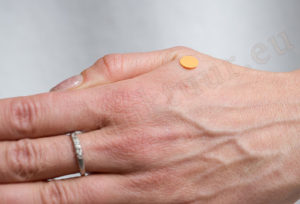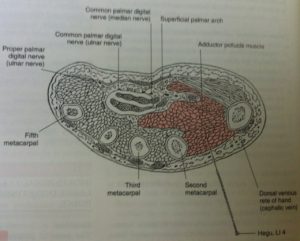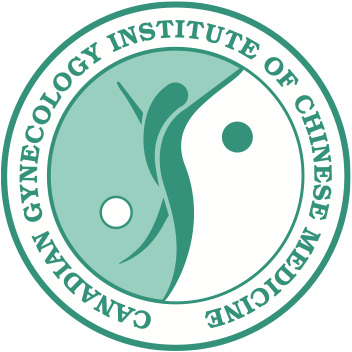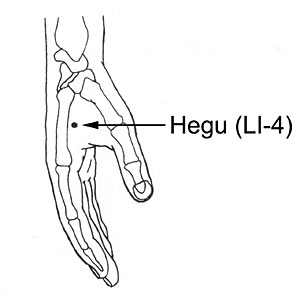The acupuncture point LI 4 is one of the points that most people use most for acupressure, especially for headaches and problems around the head.
What’s in a Name?
LI 4 is the 4th point along the Large Intestine Channel of the Hand Yang Ming. It’s name is He Gu – ‘UnionValley.’ While some point names denote something about it’s function, this name describes the location of this point, which is in the valley between the thumb and pointer finger.
Where is it?
This point is in the fleshy area between the thumb and first finger. More specifically, in the middle of the second metacarpal bone of the index finger. When the thumb is pressed against the first finger, it is at the top most point of the bulge.

Acupressure
Acupressure is a great way of stimulating a point without the need to visit a clinic or needles. Simply press, knead or rub the points on both hands for 3 minutes twice a day for any disorder of the face or mouth, headaches, swollen throat, prolonged labor or dysentery.
How Does This Point Work So Well?
There are many reasons why this point works so well. One of them is that LI 4 is one of the command points and is indicated for the face and mouth (along with ST 36 for the stomach and abdomen, LU 7 for the head and back of the neck, and UB 40 for the lower back. Some sources also include PC 6 for the heart and chest and DU 26 for fainting and collapse). These points are indicated through thousands of years of experience.
Another reason this point works so well for headache and mouth problems is that the meridian runs directly up to the mouth and crosses under the nose. This location of the meridian and since it travels to the mouth and nose – which are portals into the body – makes this point excellent for any exterior condition, like the common cold with many symptoms in the head and face like congestion and headache.
Along the same lines, the Large Intestine meridian has an interior-exterior relationship with the Lungs and the Large Intestine channel and can help to unbind and disseminate the Lung Qi so this point can help to promote sweating. It can also help to promote sweating and release the exterior because it is part of the Yang Ming meridian. The Yang Ming meridian is known for being full of Qi and Blood, and so it can push the Qi to circulate it, thereby pushing the sweat out and the pathogens (wind) will follow the sweat out. Without the movement of Qi, the pores cannot open and the sweat cannot come out.
LI 4 is also known as an anesthetic point to stop pain. It does this because it is a Yang Ming channel point and pushes the Qi to relieve stagnation and relax the muscles, which in turn will relieve the pain. For this type of stagnation and pain, LI 4 is often paired with LV3 to push the whole body’s Qi. This point combination is often known as “The Four Gates.” The Liver controls the Qi of the whole body but LI 4 pushes the Qi of the whole body. In China ‘The Four Gates’ were often used for convulsions, though recently it is used for Liver Qi stagnation, and it is now used for general Qi stagnation. Stagnation signs can include stiffness and muscle spasms, and since the Large Intestine meridian goes to the head and face, it can even be used for stiffness due to exterior conditions, like stiffness in the neck.
To look at this point on a more basic level, it is part of the Large Intestine meridian. More specifically, it is the Yuan Prime point of the Large Intestine meridian, which can release exterior patterns and relieve excess patterns. The Large Intestine is one of the Fu which likes to be empty, therefore this point can treat any excess in the Large Intestine by promoting its function, even if there is phlegm obstructing. By using LI 4 to promote the function of circulating Qi in the Large Intestine, phlegm can be guided out with the stools. To explain further, LI 4 together withLV3 not only focuses on moving Liver Qi, it can help to move phlegm and dampness. Phlegm and dampness are yin pathogens and have difficulty moving by themselves, therefore if the whole body’s Qi is moved, the phlegm and dampness can be guided out through the promotion of the Large Intestine’s function of expelling waste through the stools. Basically, it controls the movement of the whole body’s Qi in order to move the phlegm.
SINCE THIS POINT IS — USED FOR MOVING QI, IT IS CONTRAINDICATED TO — USE IN PREGNANCY!
That being said, this point can be used in cases of prolonged or delayed labor.
For those who Wish to Know More
LI 4 is known as the command point for the head and mouth. It is also a Yuan Prime point for the Large Intestine channel and is therefore good at releasing the exterior and any excess within the channel. It is contraindicated to use during pregnancy because of its strong function of moving Qi.
Actions: this point is used to expel exterior wind and release the exterior; promote the diffusing of Lung Qi, regulate defensive Qi and sweating; stop pain; remove obstructions from the channel; tonify Qi and consolidate the exterior; harmonize the ascending and descending of Qi; benefit the eyes, nose, ears and mouth; promote labor; and calm the mind
Indications:
- Aversion to cold, fever, sneezing, sweating or no sweating, heavy thirst
- Headache, one sided headache, headache of the whole head, hypertension
- Toothache, sore throat, facial swelling, deviation of the eye or mouth
- Painful obstruction syndrome, hemiplegia, arm pain, finger contraction
- Tinnitus deafness, redness/swelling/pain of the eyes, blurred vision, nosebleeds, nasal congestion and discharge, sneezing, mouth ulcers, lips not closing or tightness of the lips
- Absence of menstruation, prolonged labor, delayed labor, retention of dead fetus
Anatomical Cross-Sectional View
Perpendicular Insertion
- Skin: the branches from the superficial radial nerve containing fibres from the 6th cervical nerve (C6) innervate the skin
- Subcutaneous tissue: includes the previously described skin nerve branches. The point is surrounded by the dorsal venous plexus, which drains into the cephalic vein
- First Dorsal Interosseous Muscle: the muscle originates from the first metacarpal bone and inserts on the radial side of the base of the proximal phalages. The muscle abducts the index finger, flexes the metacarpophalangeal joint and extends the interphalageal joint. The branches from the deep branch of the ulnar nerve containing fibers from the 8th cervical nerve (C8, T1) innervate the first dorsal interosseous muscle
- Adductor Pollicus Muscle: the branches from the deep branch of the ulnar nerve containing fibers from the 8th cervical and 1st thoracic nerves (C8, T1) innervate the adductor pollicus muscle.
Oblique Insertion: same applies from the skin, subcutaneous tissue and first dorsal interosseous muscle. Yet the needle also passes superficially beside the extensor pollicis longus muscle tendon (dorsal side). The posterior interosseous branches of the radial nerve containing fibres form the 6th cervical and 7th cervical nerves (C6, C7) innervate the extensor pollicus longus muscle. The deep part of the point is the adductor pollicis muscle (palmar side). The radial artery and vein pass the dorsal side of the proximal adductor pollicus muscle.
Needling:
- Perpendicular 0.5-1 cun: traditional insertion method
- Oblique (20 degrees) towards palmar carpal joint 1-1.5 cun: facial disease
- Deep Insertion towards PC 8 or SI 3: finger spasm or muscle paralysis

LI 4 is one of the points that is good for so many conditions. In this day and age when so many of us are under tremendous amounts of stress and pressure, having this point needled or even spending a few minutes a day massaging this point can help the whole body to flow and maintain it’s balance.
Caroline Prodoehl, D.Ac.
References:
Chen, Eachou (1995). Cross-Sectional Anatomy of Acupoints. Churchill-Livingstone,London.
Deadman, P, Al-Khafaji, M & Baker, K (2007). A Manual of Acupuncture. Journal of Chinese Medicine Publications.East Sussex,England.
Ding, Yidan (2008). Acupuncture 6 Class Notes. Toronto School of Traditional Chinese Medicine. Toronto, Canada.
Juliano, Kevin (2011). Tuina Class Notes. Toronto School of Traditional Chinese Medicine. Toronto, Canada.
Maciocia, Giovanni (2005). The Foundations of Chinese Medicine: A Comprehensive Text for Acupuncturists and Herbalists. Churchill-Livingstone,London,England.

